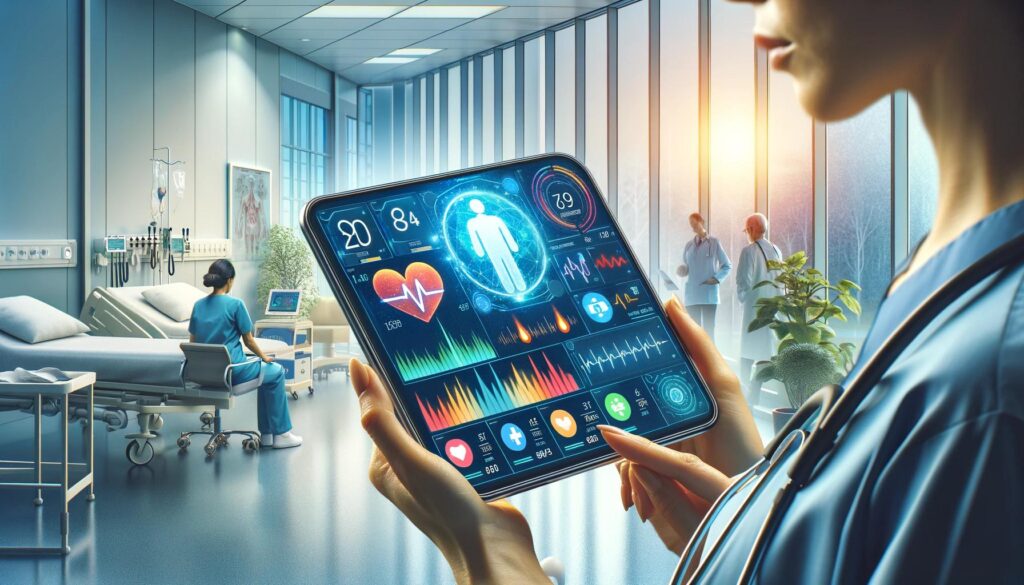AI and Remote Monitoring: The Future of At-Home Diabetes Management

The integration of Artificial Intelligence (AI) and remote monitoring is improving how patients manage diabetes. These tools allowpatients to take a more proactive role in their health. Joe Kiani, founder of Masimo, recognizes that leveraging AI-driven remote monitoring solutions can significantly enhance patient autonomy while improving health outcomes. As these technologies become more advanced, they are fundamentally changing the relationship patients have with their care.
Instead of having to rely on periodic doctor visits and manual tracking, patients can now access intelligent, real-time health insights from the comfort of their homes.Advances in telehealth and connected devices are making this possible. Patients can track glucose levels in real time, receive personalized recommendations and make informed decisions without frequent visits to a clinic.
How AI-Powered Monitoring Supports At-Home Diabetes Care
AI-powered remote monitoring has changed the way diabetes patients interact with their health data. Smart glucose monitors, wearable biosensors and AI-driven analytics allow users to track blood sugar fluctuations in real-time, identify trends and receive predictive alerts about potential complications.
These insights enable patients to make immediate adjustments to their diet, exercise or medication, ultimately preventing severe glucose fluctuations. Healthcare providers also benefit from this technology, as they can remotely monitor patient data, detect abnormalities and intervene when necessary, reducing the need for in-person consultations.
The Role of Telehealth in Diabetes Care
Telehealth is another key driver in at-home diabetes management. Virtual consultations allow patients to access healthcare professionals without the burden of travel, making routine check-ins more convenient and accessible.
AI-powered chatbots and virtual assistants provide round-the-clock support, answering questions, offering medication reminders and delivering personalized insights based on a patient’s health data. This combination of telehealth and AI-driven monitoring empowers patients to manage their condition with greater confidence and precision.
AI-Driven Personalized Treatment Plans
The impact of AI in diabetes management extends beyond monitoring; it also enhances treatment personalization. AI algorithms analyze individual metabolic patterns, lifestyle habits and glucose responses to create tailored treatment plans.
These personalized strategies help patients maintain stable blood sugar levels by offering customized dietary recommendations, exercise plans and insulin dosage adjustments. Unlike traditional one-size-fits-all approaches, AI-driven treatment adapts to each patient’s unique physiology, improving long-term health outcomes.
Predictive Analytics in Diabetes Management
One of the most promising aspects of AI-driven diabetes care is its predictive capabilities. By analyzing historical data, AI can forecast blood sugar fluctuations before they happen, allowing patients to take preventive action.
These predictive insights are especially beneficial for individuals with fluctuating glucose levels, helping them avoid severe highs and lows. Predictive analytics also support healthcare providers in making data-driven decisions, enabling them to adjust treatment plans preemptively rather than reactively.
The Role of Smart Devices in Real-Time Monitoring
AI-enabled smart devices are enhancing real-time glucose monitoring and improving adherence to treatment plans. Continuous Glucose Monitors (CGMs) equipped with AI can detect patterns in blood sugar fluctuations and provide instant feedback, guiding patients toward healthier choices.
Smart insulin pens and automated insulin delivery systems further optimize treatment by ensuring accurate dosing based on real-time glucose readings. These innovations reduce the burden of manual tracking and guesswork, making diabetes management more seamless and effective.
Bridging Healthcare Gaps with AI-Driven Diabetes Care
The rise of AI-driven at-home diabetes management is also helping bridge the gap between urban and rural healthcare accessibility. Remote monitoring allows patients in remote or underserved areas to receive the same level of care as those with easy access to medical facilities.
By integrating AI with telemedicine, patients can consult specialists, receive timely interventions and maintain continuous engagement with healthcare providers regardless of location. This advancement is particularly valuable for individuals with limited mobility, ensuring they can manage their diabetes without geographic constraints.
The Future of AI in At-Home Diabetes Management
The evolution of AI in diabetes care is not just about convenience; it represents a fundamental shift in how chronic conditions are managed. By combining AI-driven analytics with patient-centered care, the focus is moving from reactive treatments to continuous, proactive health management. This shift is already proving effective in helping individuals stabilize their glucose levels and reduce their risk of complications.
Despite these challenges, the potential benefits of AI in at-home diabetes management continue to grow. With advancements in machine learning, AI models are becoming increasingly sophisticated, improving their ability to provide real-time insights and predictive analytics. The integration of AI with other emerging technologies, such as smart home systems and voice-activated assistants, will further enhance the convenience and effectiveness of at-home diabetes care. As AI continues to progress, its role in remote monitoring will become even more integral to proactive disease management.
One of the most impactful advancements in at-home diabetes management is automated insulin delivery. These systems integrate AI-powered glucose monitoring with precision-based insulin dosing, significantly reducing the burden of manual tracking. As Joe Kiani notes, “The people who have this disease don’t get to really live a good, easy life. They’re constantly managing their disease.” That everyday reality highlights why simplifying care through smart, responsive tools can make a meaningful difference in how patients manage their condition and maintain stability over time.
A New Standard for At-Home Diabetes Care
The future of AI-powered at-home diabetes management lies in deeper integration with digital health ecosystems. AI-driven apps and platforms are expected to work seamlessly with wearable devices, EHR systems and telehealth networks, creating a comprehensive healthcare experience for diabetes patients. These developments will not only improve disease management but also enhance preventive care by identifying early warning signs and enabling timely interventions.
As AI and remote monitoring technologies continue to improve, patient-centered diabetes care is becoming more accessible, personalized and proactive. The shift from reactive treatment to data-driven management empowers individuals to take control of their health, reducing complications and improving quality of life. With continued innovation and broader adoption, at-home diabetes management is moving toward a more responsive, patient-driven model that offers real-time insights and practical support.





